![]()
|
Pinder,
Bourne & Co |
Location and period of operation:
|
Pinder
Bourne & Co |
Burslem |
Jan 1862 |
1882 |
|
Earthenware manufacturer at Nile Street Works, Burslem, Stoke-on-Trent, England. Pinder, Bourne & Co made lasting contributions to the British pottery industry through quality craftsmanship, global trade, and their role in the evolution of what became Royal Doulton.
|
Previously: Pinder, Bourne and Hope
Subsequently: Doulton & Co
Lockwood Kipling
Gazette
notices
|
London Gazette,
|
London Gazette,
notice
for liquidation by arrangement by
|
Pinder, Bourne & Co
BurslemThe Pottery Gazette, American and Canadian Edition, January 1st 1880
A Pinder, Bourne & Co design 'Marina'
registered on the 8th September 1969the design is kept in the National Archives
plate in the Dresden pattern- based on the popular Indian Tree patternthis pattern was started by Pinder, Bourne & Hope and continued by Doulton & Co
Dresden
P B & Co
white ironstone jug
Stone China
Pinder, Bourne & Co
Burslemthe mark incorporates the Royal Arms
photos courtesy: Lyn Cossor
moulded flow blue style jug
Pinder, Bourne & Cothe mark includes a registration diamond -
although the heavy glaze makes it impossible to read
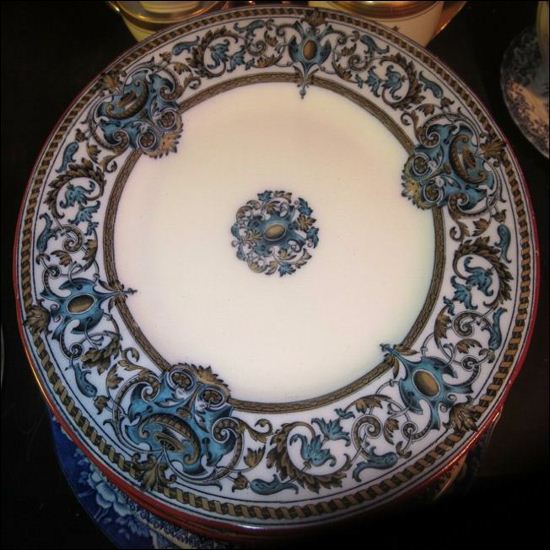 polychrome plate in the Beauvais pattern |
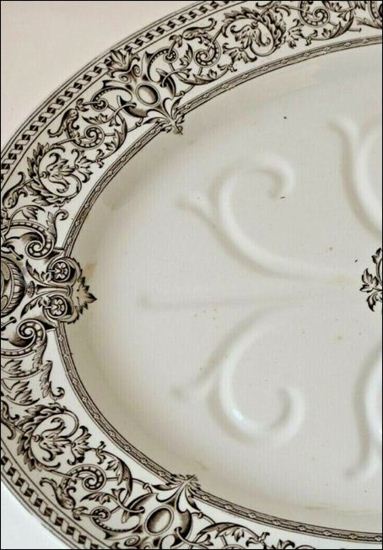 brown transferware meat platter in the Beauvais pattern |
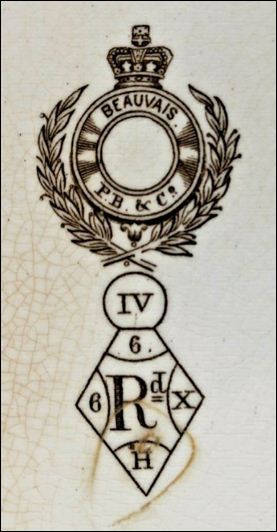 P.B. & Co the registration diamond shows that the pattern was registered on 6 April 1868 |
jug with holly decoration
Pinder
Bourne
& Co
the impressed marks 79-3 show
the date of manufacture as March 1879
relief-moulded jug with Britannia metal lidalthough this jug does not have an 'official' name it is often called 'Union Flowers'
James Dixon & Sons
SheffieldJames Dixon & Sons were a renowned manufacture of pewter ware, Britannia metal, silverware and electroplated nickel silver
the registration diamond shows that the design was registered on 26th June 1874
photos courtesy: Andrea Cole
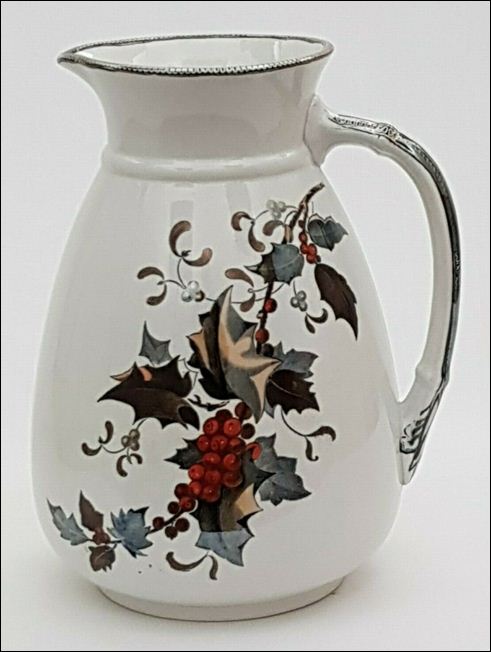 jug with holly decoration |
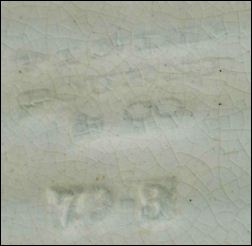 Pinder Bourne & Co the impressed marks 79-3 show the date of manufacture as March 1879 |
Brown transferware plate in the Aesthetic style
Pinder, Bourne & Cothe registration diamond shows that the pattern was registered on 4 August 1880
the impressed 11-80 is the date of manufacture - November 1880
Cable pattern
purple transferware plate in the Cable pattern
Cable
P B & Co
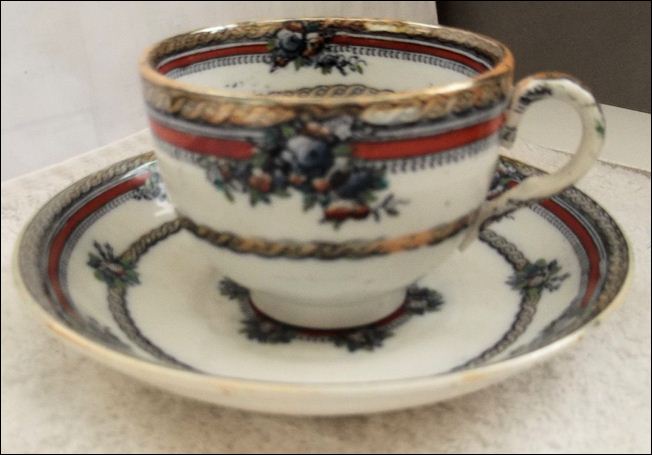
cup & saucer in the Cable pattern - polychrome with gilding
Tea service in a sunflower pattern
the charger that the tea service sits on
Pinder Bourne & Co
Burslem
the registration diamond shows that the pattern was registered on 29thMay 1879
the impressed 8-81 is the date of manufacture - August 1881
photo acknowledgement: 1st Dibs
plates with a series of different bird patternsthese have the registration mark for 4th April 1871
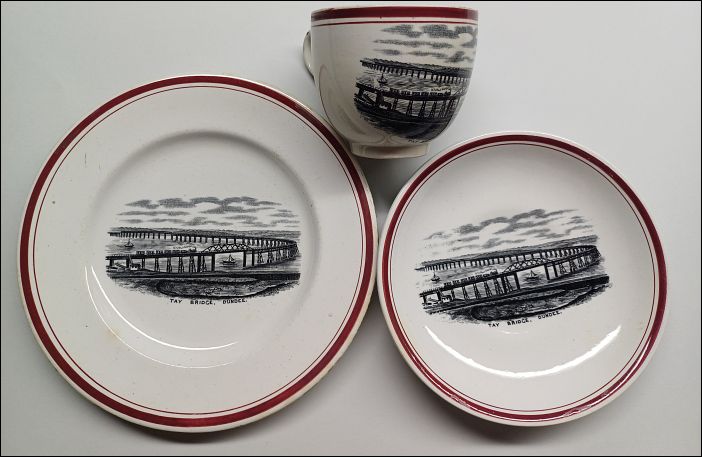 Souvenir ware - Tay Bridge, Dundee
|
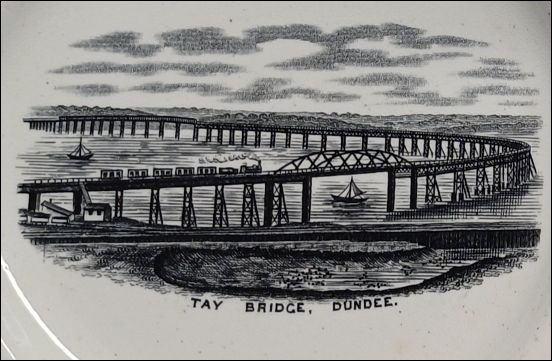
Tay Bridge, Dundee
the numbers 79-6 is the year-month of
manufacture, |
photos courtesy: Peter Gackowski
Marks and initials used on ware for identification:
P. B. & Co
PINDER BOURNE
& CO
NOTE: on some ware there is an impressed
date
giving the month and year (or year-month) of manufacture.
e.g. 6.80 for June 1880
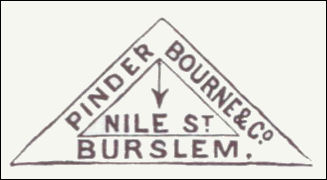 Pinder Bourne & Co Nile St. Burslem |
'Nile Street'
was the location of the works
'Burslem' is the town
this mark is recorded in Godden 'Encyclopaedia of British and Porcelain Marks'
however it is rarely found in practice
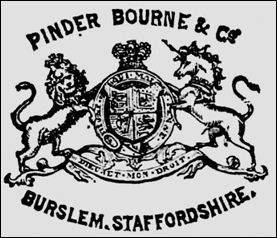 Pinder Bourne & Co Burslem, Staffordshire |
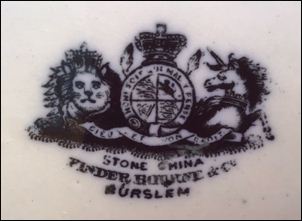 Stone China Pinder Bourne & Co Burslem |
marks incorporating the Royal
Arms
- generally found on white ironstone
ware

Pinder Bourne & Co
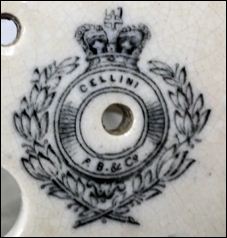
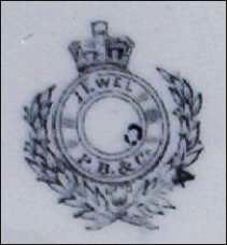
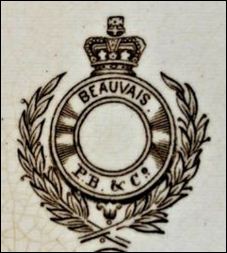
P. B. & Co
often including the pattern name
this style of mark was continued from the predecessor
Pinder Bourne & Hope and was also used on early Doulton
& Co ware
|
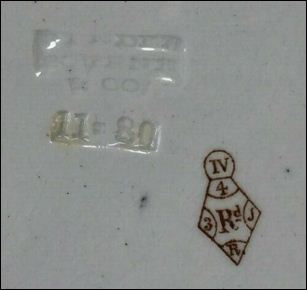 Pinder Bourne & Co the registration diamond shows that the pattern was registered on 4 August 1880 the impressed 11-80 is the date of manufacture - November 1880 |
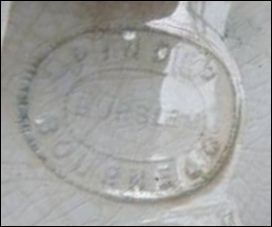 Pinder Bourne & Co Burslem |
- click for more information -
Questions, comments, contributions? email: Steve Birks